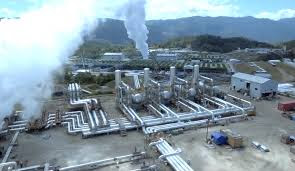Just how large is Kenya’s GDP in 2021?
 |
| Geothermal is now the lead electricity Source in Kenya |
Here’s why: There is an animal Economists- and I believe
Statisticians too- call rebasing the accounting base year which captures the
true size of the economy. Rebasing is
updating the base year to a new year so that the accounting of GDP is updated.
Rebasing, therefore, means selecting a new base year.
You see, the economy is
not static. It is dynamic. It therefore grows and expands over a period of
time. The expansion includes new economic activities that were initially
insignificant, but have become significant contributors. It also includes new
developments that did not exist previously. It also includes new Technological
advances that improve efficiency in the production of goods and services. All these expand the basket of goods
available in a country.
For these reasons,
countries rebase their accounting base year to account for all these changes. A
base year is a date when things were relatively stable. The World Bank
recommends rebasing this date every five years but many countries take longer.
In Kenya, the new accounting period was announced in 2014, updating the base year to 2009 from 2001. Consequently, the GDP expanded to US$55 billion, that is, $11 billion larger than the size captured using the old base year.
Also, Read http://eaers.blogspot.com/2014/10/Kenya-is-officially-middle-income.html.
Kenya entered the low middle- income class with a per capita GDP of around $1,240 due to the update, Kenya also became the Ninth largest economy in Sub-Saharan Africa. Last year, Bloomberg, the US-based economic and financial data outlet reported that Kenya was the third-largest economy in the region, after Nigeria and South Africa, having leapfrogged six other countries.
 |
| SGR: This did not exist in 2010 |
This leads to the thematic question: Just how Large is
Kenya’s GDP? The last base year, 2009, is now outdated as it is more than 10 years
old. We need to rebase the economy to a more recent year. We think 2018 is a stable year.
Here are some facts: In 2010, a year after the update, electricity generation was 1,471 MW dominated by hydro and thermal sources. Geothermal was still lower than 300MW. There were 15MW of wind power and solar was restricted to households. Since then green energy sources have grown in importance and contribute a large chunk of power to the national grid. Geothermal at 1,125 MW has leapfrogged Hydro to be the baseload source. A baseload source is the source of electricity generation that must be at the system at all times. Wind Power has jumped to 336 MW, Solar has entered the scene generating 50MW to the National Grid.
Kenya is now
the world’s fifth-largest generator of geothermal energy and an exporter of
geothermal technology. The national power generating capacity has almost
doubled to 2,651 MW while peak demand hovers around 1,900 MW. For the first
time in its history, Kenya can claim to be electric power secure.
In the transport sector, paved roads increased from 11,183
KM in 2010 to 17,600KM in 2019 and still counting. We have 600KM of high speed
Standard Gauge Railway operational. This did not even exist in 2014. The
Mombasa Port has seen its container handling capacity rise from 440,000 TEUs to
1.5 Million TEUs. Its freight handling capacity has risen to 34 million tons a
year in 2019 from 14 million tons in 2014.
Also, Read http://eaers.blogspot.com/2019/09/mergers-to-create-regional-behemoths.html
Rebasing the accounting year could produce astounding
results. No. we shall not beat the top two. We shall be a larger number three. The
last time this publication attempted this back in 2014, we missed the figure by a significant
US$2 billion. We hope we are again $2 billion dollars short but we could miss it
by a larger figure. The results would nonetheless be astounding.
Also, Read http://eaers.blogspot.com/2014/01/kenya-enters-middle-income-class.html
If rebased, GDP per capita will definitely rise past $2500. The debt to GDP
ratio will significantly shrink perhaps to 50 percent of GDP, or slightly up
or down. Kenya would improve its debt
risk ratings from a distress risk to something better.
From the anti-debt warriors’ standpoint, debt per capita will
shrink further compared to income per capita. This could be a cause to worry
for the ADWs for it could pull the carpet from under their feet.
Even then, It is time for the government to act and rebase our economy!



Absolutely true, hope things were better than it's, the business environment is untenable, gab between the rich and the poor is widening due to unrealistic plans by the government to borrow from the financial institutions.
ReplyDelete